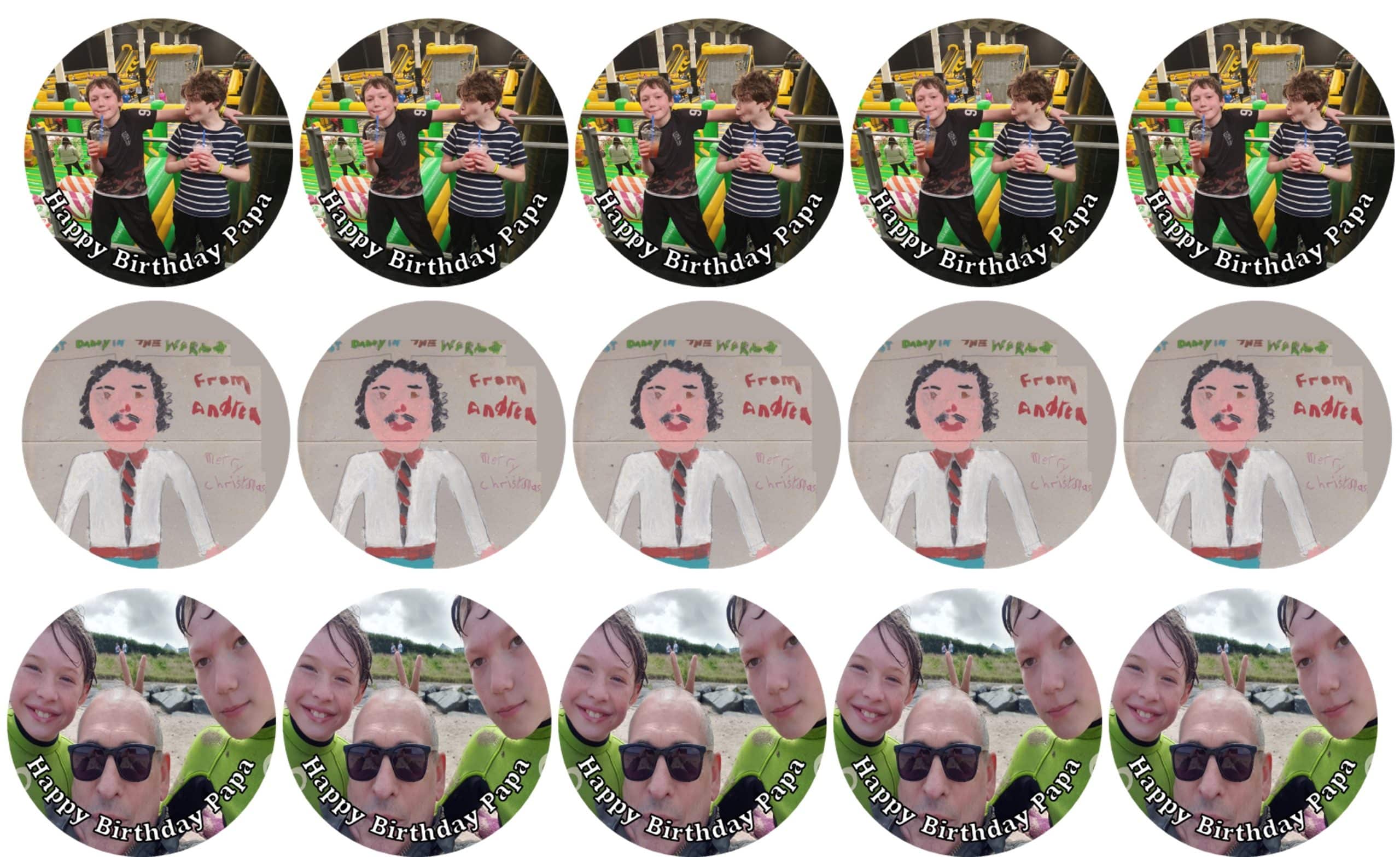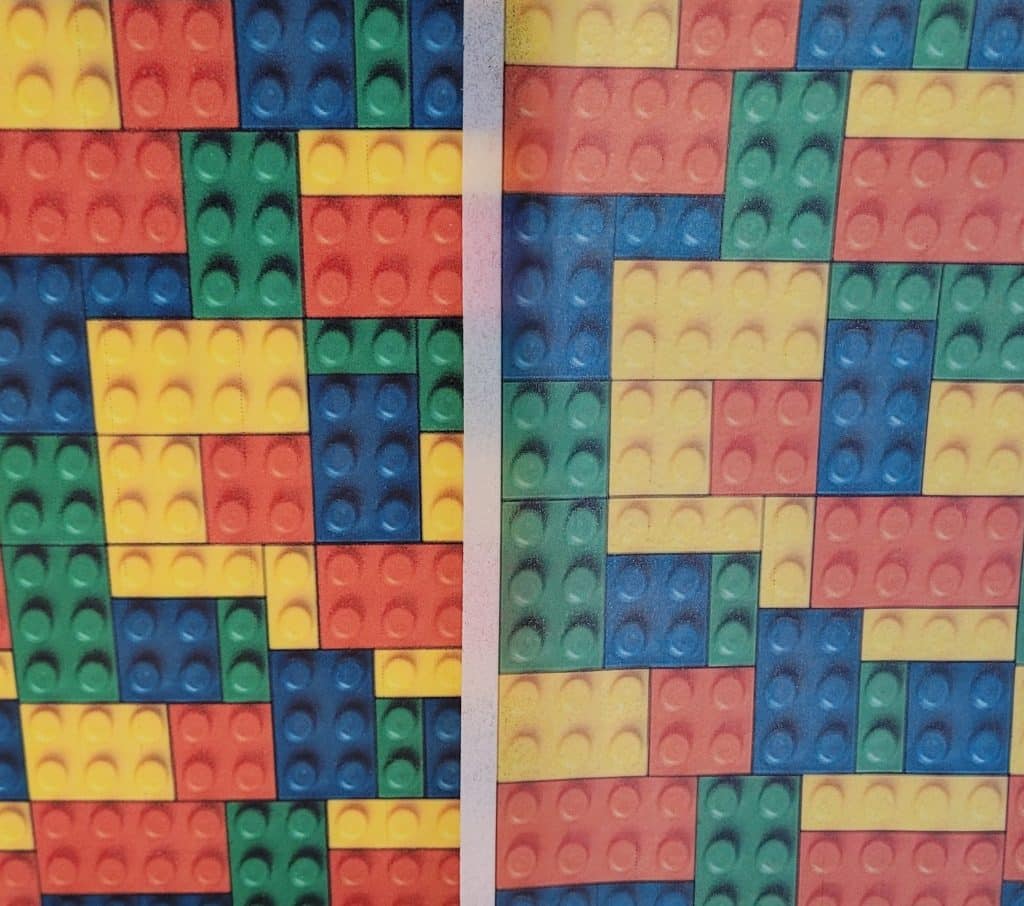Own image cupcake toppers

Mastering the Art of Cake Decoration: Printed Icing Sheets vs. Wafer Paper
In the world of cake decoration, the choice of materials can significantly impact the aesthetic and taste of the final product. Two popular options, printed icing sheets and wafer paper, offer unique advantages for cake decorators. While both can carry custom images, logos, or messages, understanding their differences is key to selecting the right material for your project. In this blog, we delve into the nuances of printed icing sheets versus wafer paper, exploring their composition, applications, and the factors to consider when choosing between them.
Understanding Printed Icing Sheets
Printed icing sheets, also known as edible icing papers, are thin layers of icing that are affixed to a backing sheet to go through a printer. These sheets are made from sugar and cornstarch, creating a slightly sweet taste. They require edible ink for printing, which produces vibrant and high-resolution images. Once printed, the icing sheet can be easily applied to the cake, where it melds with the icing beneath, creating a seamless appearance.
Advantages:
High-Quality Images: Printed icing sheets are capable of reproducing images with clarity and vivid colours, making them ideal for detailed designs and photographs.
Texture and Taste: These sheets have a smooth texture and a mild sweet flavour that complements the cake without overpowering it.
Flexibility: They are flexible and can be used on various icing backgrounds, including fondant, buttercream, and ganache, without dissolving immediately.
Understanding Wafer Paper
Wafer paper, on the other hand, is a more lightweight and cost-effective option. Made from potato starch, water, and vegetable oil, it is thinner than printed icing sheets and has a slightly translucent appearance. Wafer paper is best suited for more abstract designs or where a matte finish is desired. It’s commonly used for making edible flowers, butterflies, and other decorations that require a bit of structure. Because of its translucent consistency it is best used on a white background such as buttercream or fondant.
Advantages:
Cost-Effective: Wafer paper is generally cheaper than printed icing sheets, making it a budget-friendly option for larger projects.
Versatility in Decoration: Apart from printing, it can be moulded and shaped when dampened, allowing for a wide range of decorative possibilities.
No Taste: Wafer paper is virtually tasteless, which can be an advantage if you do not wish to alter the flavour profile of the cake.
Printed Icing Sheets vs. Wafer Paper: The Comparison
1. Image Quality and Application
Printed icing sheets take the lead when it comes to reproducing high-resolution images with clarity and depth of colour. They are best used for photo cakes or when a precise, vivid print is desired. Wafer paper, while capable of carrying printed images, may not display the same level of detail and colour saturation. However, it excels in applications requiring texture and shape, such as creating edible decorations. The images below show the difference in the two products.
Icing Wafer

2. Flexibility and Texture
The flexibility of printed icing sheets allows them to curve around the contours of a cake, making them suitable for full-cake coverage. Wafer paper is stiffer, which can limit its application to flat surfaces or as standalone decorations.
3. Taste and Edibility
Printed icing sheets have a slight sweetness that tends to blend well with the cake’s flavour. In contrast, wafer paper’s tastelessness ensures it doesn’t interfere with the taste of the cake, although its texture can be somewhat noticeable if not properly integrated into the icing.
4. Durability and Ease of Use
Both materials are easy to work with, though printed icing sheets require careful handling to prevent tears. Wafer paper, being more robust, can be easier to manipulate, especially for three-dimensional decorations. Whilst both wafer paper and icing sheets can be affected by humidity icing sheets are better suited for environments with high humidity, as wafer paper can become brittle and difficult to work with in such conditions.
Choosing the Right Material for Your Cake
The choice between printed icing sheets and wafer paper ultimately depends on the specific requirements of your cake decorating project. Consider the following factors when deciding:
Design Complexity: For detailed and colourful images, printed icing sheets are preferable. For textured or three-dimensional decorations, wafer paper is the go-to choice.
Budget Constraints: If cost is a concern, wafer paper offers a more economical option.
Flavour Considerations: For those sensitive to taste alterations, the virtually tasteless nature of wafer paper can be beneficial.
Environmental Conditions: Printed icing sheets are more resilient in humid conditions compared to wafer paper.
Image Quality: If you need you image to have vivid colours then icing sheets are the best opion particularly for photo images.
Conclusion
Both printed icing sheets and wafer paper offer distinct advantages that can elevate the art of cake decoration. Whether you aim to reproduce a stunning photograph on the cake’s surface or craft delicate, edible flowers for adornment, understanding the strengths and limitations of each material will help you achieve the desired outcome. By carefully selecting the appropriate medium for your project, you can ensure that your cake not only delights